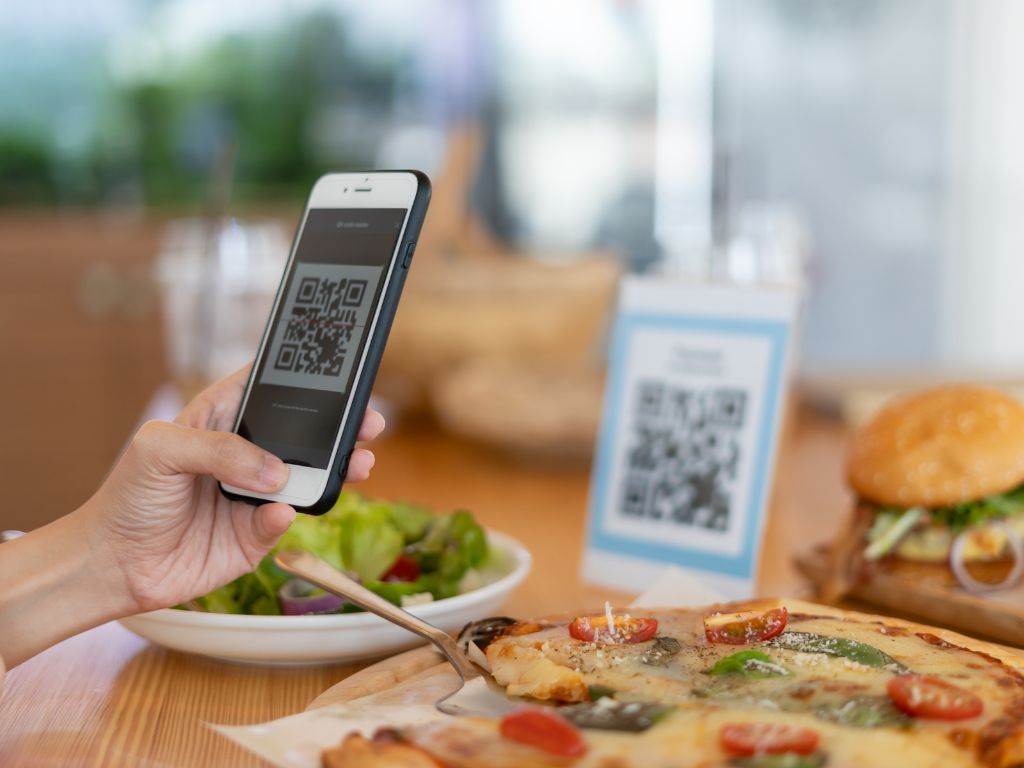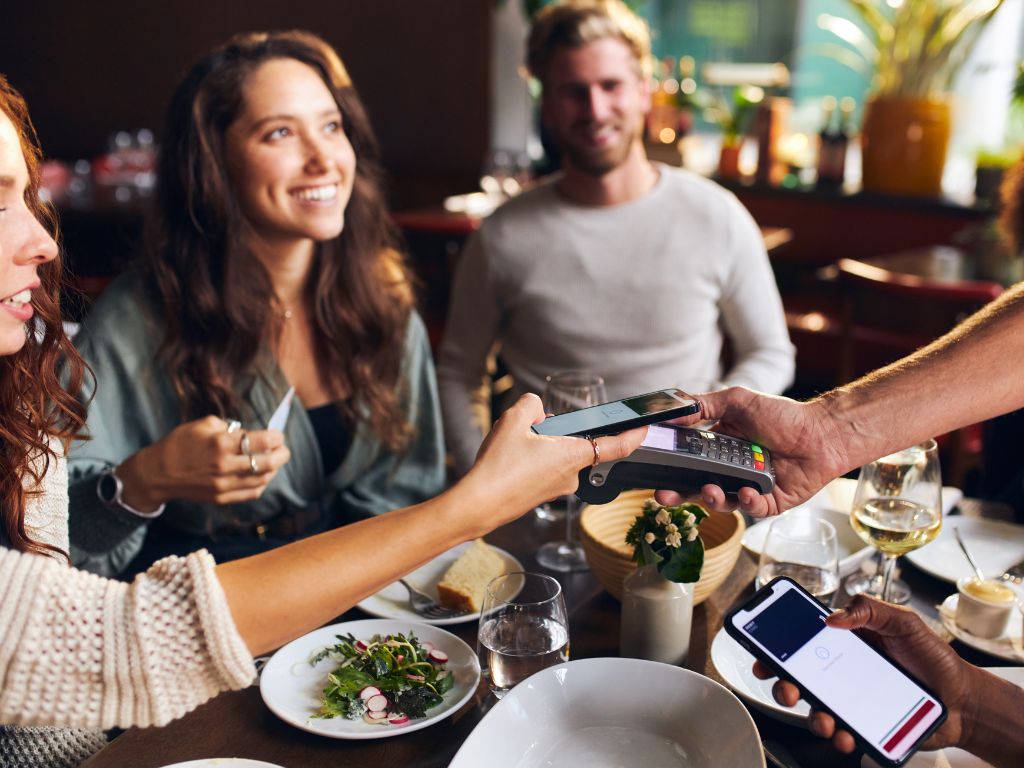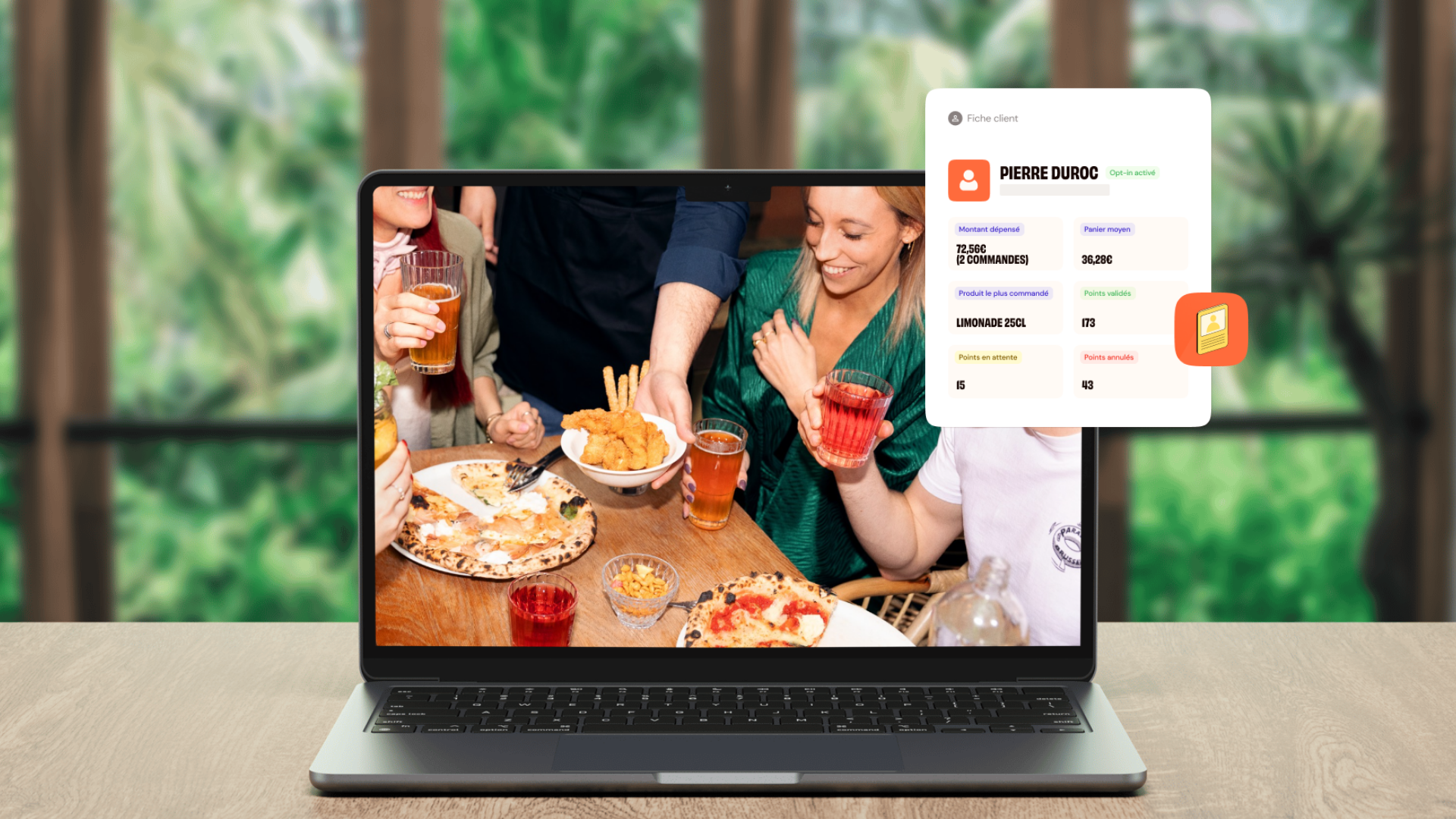Higher average ticket: the direct effect of self-order tools
March 31, 2025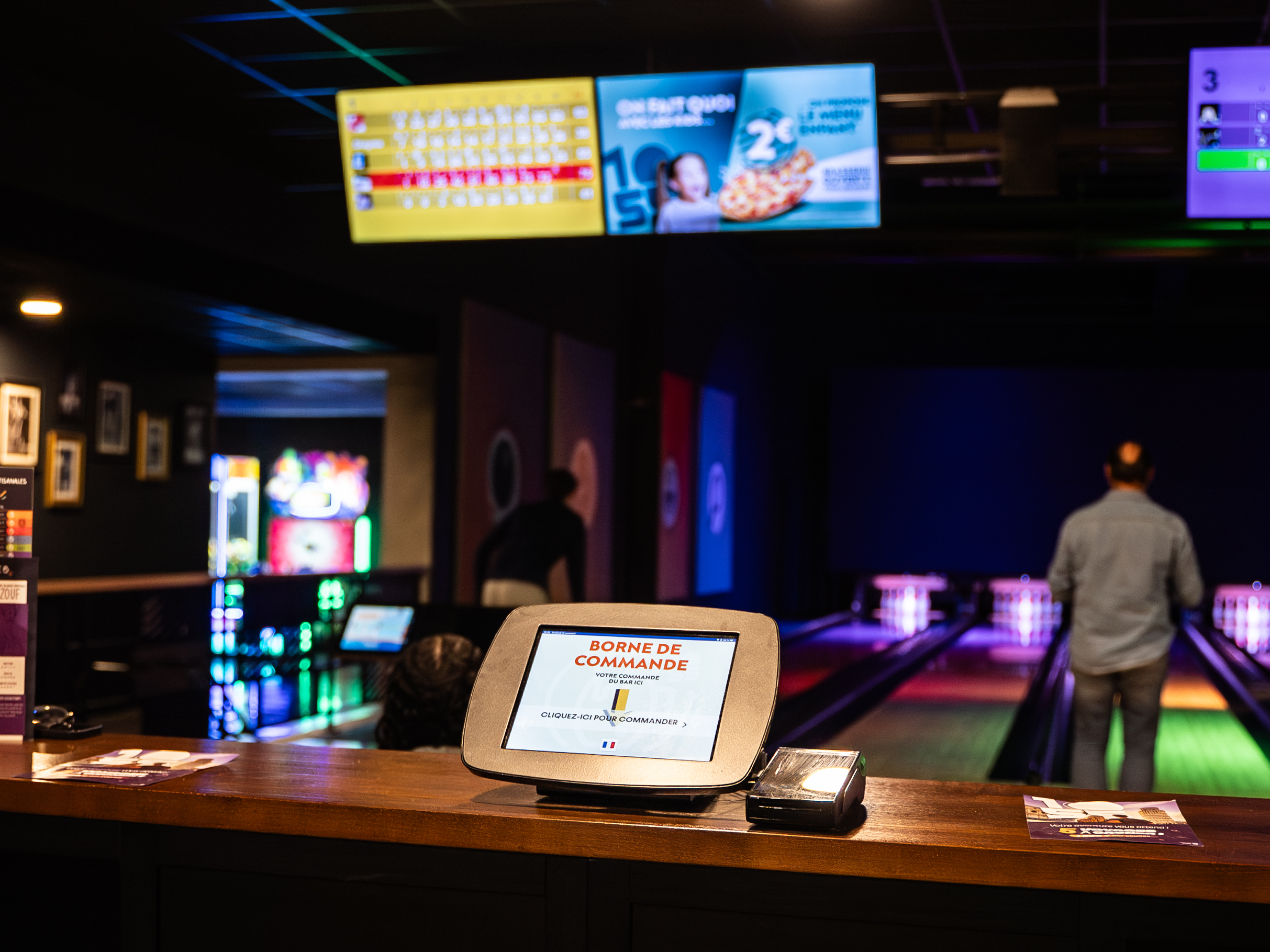
A customer sits down, reads the menu on the screen, takes his time. There's no one to pressure him. No queues. No waiter waiting for his order.
He adds a supplement. Then a drink. Then dessert.
It wasn't planned. But that's it, the average basket has gone up by 5 euros.
You won't always see this scene. But it does happen, over and over again, when a digital journey is well designed.
No need to be aggressive. No need to go looking for the sale. All you need to do is leave space, and guide at the right moment.
Control terminals, QR code, order online When properly configured, these tools do not replace your teams. They work with them, continuously, without forgetting to offer what makes the difference.
✔ More complete controls.
✔ A smoother experience.
✔ And concrete data to understand what works.
In this article, we show you how to move from a passive tool to a real performance driver.
A personalized order, at the right time
Offering an extra sauce, the right dessert or an XL version of the menu is more effective when it's done at the right time. And that's precisely where digital technology comes into its own.
Digital tools allow you to :
➜ trigger suggestions along the buying journey, without drowning the customer in options right from the home screen,
➜ adapt the suggestions to the selected dish (and avoid absurd suggestions),
➜ adjust recommendations according to time of day, weather or stocks.
"Offer a hot drink in the morning or an ice cream when it's 30°C. It sounds obvious, but in the dining room, few waiters have the time (or the reflex) to do it. With digital technology, it's automatic."Example of daily use
And it's not just a question of algorithms: it's a question of context. You guide the customer without interrupting, with suggestions that make sense. No need to over-solicit. Just be there at the right time.
And that's good for the average shopping basket. And for the customer experience.
The digital journey: a well-honed conversion funnel
A good digital journey is like a good sales tunnel: fluid, logical, and designed to ensure that the customer follows through to the end.
Each stage is an opportunity to optimize :
➜ a clear menu, legible, organized by stage (starter / main course / dessert, or menu / personalization / payment).
➜ appealing visuals, without overloading the screen.
➜ short messages to guide without distracting.
You don't leave the customer with an XXL map to decipher. You accompany them, without ever getting in their way.
"The results for our customers? Fewer abandonments, more complete purchases, and faster checkouts. Even during rush hour."Things to remember
And above all: you control the display order, the products highlighted and the upsells visible at each stage.
Your customers spend more, and you see it immediately
Digital tools don't force sales, they make choices easier. And when the experience is seamless, the average shopping basket rises, without having to train your teams in sales techniques.
The figures speak for themselves:
➜ The average basket climbs from 10 to 30 % in the first few weeks.
Not because customers consume more than they'd like, but because they have the time, freedom and clarity to choose what they really want.
Concrete changes:
✔ Supplements (sauces, garnishes, toppings) are better valued: in theatres, they are sometimes forgotten or skimmed over. In digital, they are systematically proposed.
✔ Drinks and desserts are more visible. In the dining room, they often depend on the waiter's prompting. On screen, they fit naturally into the course.
✔ Full menus are more often selected than single courses, because they are presented as a simple and advantageous option.
And unlike a team briefing that's forgotten at the end of the shift, these optimizations remain.
Every customer sees the same offer, under the same conditions. No forgetting, no variation.
That's also why it works.
Whether you're a fast-casuala food court or a leisure complexdigital gives you a database on purchasing behavior. And that's invaluable when it comes to adjusting your offer, reviewing your margins or rethinking your menu.
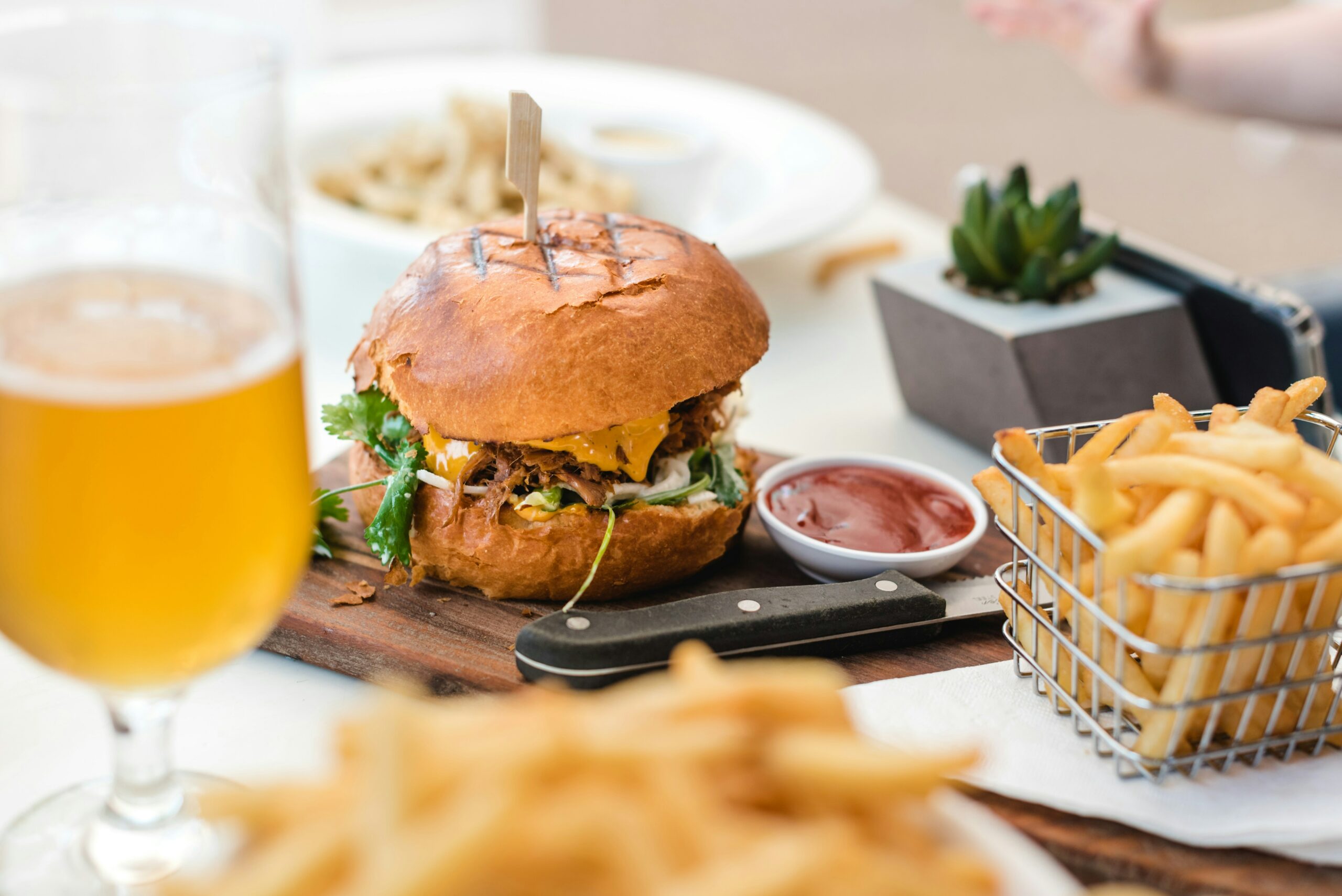
Disclaimer: digital is only as good as its configuration
A poorly organized kiosk, a QR code that leads to a PDF menu or a glitchy interface... and the whole experience falls apart.
Good support isn't enough. You also need a good partner to configure, connect and upgrade it.
What to look for first:
➜ A clear, fluid path, with no unnecessary steps,
➜ Products intelligently highlighted, according to your margins and schedules,
➜ Direct connection to cash register, customer database, loyalty program.
This is the case for solutions such as QR codes or the control terminals offered by Obypay.
They don't just display a menu: they accompany the customer throughout the ordering process.
Because it's not just technology that makes the difference. It's the level of customization, the integration with your system, the responsiveness of support, the quality of follow-up.
On paper, some solutions may seem "accessible", but unfortunately the price is often paid later: bugs, lack of follow-up, shaky customer experience.
We tell you more in this article ➜ Why be wary of low-priced control terminals?
It's better to invest in a reliable tool, designed to last, and backed by a solid partner.
Because a poorly designed digital journey doesn't sell. It scares people away.
1,500 restaurateurs have put their trust in us, and they're the ones who talk about it best
Today, Obypay has more than 1,500 establishments equipped, in France and Europe.
Independents, chains, food courts... they've all chosen a solution that does more than just take orders: it helps them sell better, save time and stay in control.
And the easiest way is to let them have their say.
➜ Factory Bowling saw its average shopping basket rise by 30 % per customer, thanks to in-store ordering tablets.
➜ The food court Le Palais Nancy has adopted order kiosks to efficiently manage a large volume of orders, while guaranteeing a quality customer experience.
➜ Beer's Corner has laid solid foundations for its franchise development, integrating well-connected, easy-to-control digital tools right from the start.
➜ Palmito food court has streamlined its entire customer journey... while easing the pressure on recruitment.
Contact our team to discuss your needs. We support you from A to Z.
Not just to connect a terminal or a QR code, but to turn it into a real performance lever.










